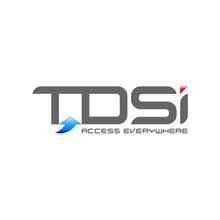 |
| TDSi’s installation and maintenance partner Frontline Security Solutions recently installed a TDSi solution in a leading private school |
Integrated security systems provider TDSi sees the education sector as a particularly interesting growth market, as Managing Director John Davies elaborated, “Our partners have shown significant growth in their education market business in recent years, with the UK and Middle East having particularly strong demands for access control solutions. All the signs are that the market is set to continue growing and offers considerable opportunities for installers, suppliers and manufacturers of security systems that offer products and services which address the needs and concerns of schools, making them safer for all concerned.”
A key factor in understanding the growth of the education security market is realising the actual and perceived security risks in the education sector. Whilst there are numerous reasons for implementing effective access control, common concerns include:
- Prevention of intrusion on the premises by unauthorised people
- Maintaining the security and safety of pupils
- Combatting the increase in assaults on staff and pupils
- Reduction in the theft of equipment
Due to budgetary restrictions, many educational establishments have limited resources for manned security. Any access control solution needs to take into consideration this limited human resource and enable the staff to be able to rely on its effectiveness through a high degree of dependable automation.
John Davies continued, “Once it has been agreed that security and access control will be beneficial for an education facility, the next step is to decide which features will be most suitable for the application and will actively improve the security situation. This can vary greatly from school to school, but increasingly many educational establishments are turning to fully integrated systems to offer the highest levels of security and ease of management.”
"MIFARE smartcard technology is well established, provides multiple uses for one card and has been proven worldwide - benefitting from a significant reduction in the price of cards and a higher level of security over a proximity card reader" |
The ideal approach for many educational security projects is to use a range of technologies, for example combining access control with an intercom system and cameras monitoring the entrance. This particular integration example enables visitors to be identified and authorised before allowing access to the building. Integration of various security components often gives the best overall solution, creating a network of safeguards that is greater than the sum of its parts. Typically this will involve fusing the key elements such as access control, CCTV, intrusion detection etc. to provide a comprehensive integrated security system that is highly cost-effective.
By way of a real-world illustration of the high suitability of an integrated security system in an education setting, TDSi’s installation and maintenance partner Frontline Security Solutions recently installed a TDSi solution in a leading private school in North East London. The system, comprising of TDSi MICROgarde Controllers, MIFARE readers and EXgarde PRO security management software, monitors and protects pupils and staff, covering over 140 doors across a number of sites. Authorised users can easily and rapidly move between secure and open access areas using a MIFARE card. The MICROgarde controllers administer and relay details back to the central EXgarde PRO software which in turn alerts the security team of any potential issues or security breaches. At the same time, all the security information is shared with the school’s SIMS (School information Management System) to ensure that records are maintained and that access can be granted or denied rapidly in line with the latest information updates. Additionally, these records can be used to assess attendance and timekeeping of users to gain a thorough understanding of any access situation.
"Using TDSi’s EXgarde PRO access management and integrated security systems management software for example, allows the operator to establish communications with readers, capture the identity template within EXgarde PRO" |
Jason Hillier, Business Development Manager at Frontline Security Solutions commented, “For many of our education sector clients, it is ease-of-use that is rated alongside the general level of security as key objectives. MIFARE smartcard technology is well established, provides multiple uses for one card and has been proven worldwide - benefitting from a significant reduction in the price of cards and a higher level of security over a proximity card reader. There is also a great degree of flexibility, as with a multi-use card there is no need to carry more than one token and it can cover a variety of uses including access control, cashless vending, a library and biometric user templates – perfect for use by busy pupils and staff.”
TDSi is also finding an increasing interest in the use of biometric systems in the education sector, with fingerprint readers currently the most widely used type. They have already been introduced into many areas and common applications include access control, e-registration and canteen services. John Davies added, “Increasingly, the education sector is considering more sophisticated biometric solutions such as Facial Recognition, which can be conveniently combined with the SIMS. Using TDSi’s EXgarde PRO access management and integrated security systems management software for example, allows the operator to establish communications with readers, capture the identity template within EXgarde PRO, store the template to a card, store the template in the reader and distribute and manage the templates. Integrating these systems through a single point means the operator can again manage all operations through a central, easy-to-use graphical interface, which is a much more efficient use of their valuable time.”



















